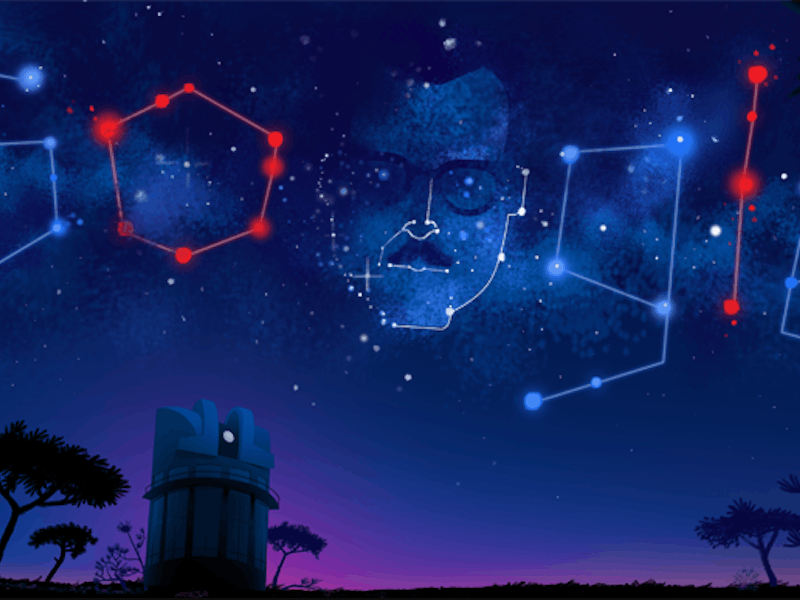How Guillermo Haro's 'Flare Stars' Twinkle in the Night Sky
The astronomer was celebrated in a Google Doodle.

Google paid tribute to Guillermo Haro on Wednesday, the first astronomer from Mexico elected to the Royal Astronomical Society. The search engine put a commemorative “doodle” on its homepage for what would have been his 105th birthday, celebrating the man that discovered the flare stars near Orion’s belt.
Working with William Morgan in 1953, Haro discovered flare stars around the Orion nebula. A flare star is any that varies in brightness in the space of a few minutes, believed to be caused by flares much larger than those on the sun. All those discovered so far have been red dwarfs, early-stage stars dimmer and smaller than the sun. That means you can’t see them using the naked eye, but you can spot the region of Haro’s discovery by looking for Orion’s belt, three closely-aligned bright stars called Alnilam, Alnitak and Mintaka. With the right equipment, flare stars provide quite the spectacle.
Haro made a number of other big discoveries during his life, like Herbig-Haro objects. These are shock regions of bright nebulae associated with star-forming regions, shown to be triggered by jets of partially ionized plasma moving away at high speed. These jets last for around 100,000 years. The result is nothing short of beautiful, like in these images captured by the Hubble Space Telescope over a 14-year period:
Herbig-Haro objects.
Born in Mexico in 1913, the astronomer lived a fascinating life. Growing up in the Mexican Revolution, Haro initially graduated in philosophy before moving into his chosen subject as an assistant of L. E. Erro. He completed research at observatories around the world where he made his discoveries. The Mexican state of Sonara contains an observatory named after him that’s maintained by the National Institute of Astrophysics, Optics, and Electronics, which Haro established to support science students.
It’s not the first time Google has paid tribute to a famous figure. Previous doodles include those dedicated to astrophysicist Subrahmanyan Chandrasekhar, filmmaker Sergei Eisenstein and author Gabriel García Márquez.
The night sky may look gorgeous with the naked eye, but Haro showed how the deepest regions of the universe are filled with gorgeous spectacles of colors waiting to be discovered.